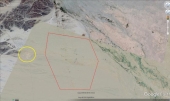https://www.youtube.com/watch?v=RDCFbfcRcUE
Hi. In this video, Andrew Millison explains how to slow, spread and sink water in dams.
I'd swear he had another video with more specifics, like where to dig so your dam doesn't have to face all the strength of the stream.
Brief, you dig a large area in one side so when the flood comes, it fills that area, making the stream much shallower. The bigger the flow, the larger the dam.








